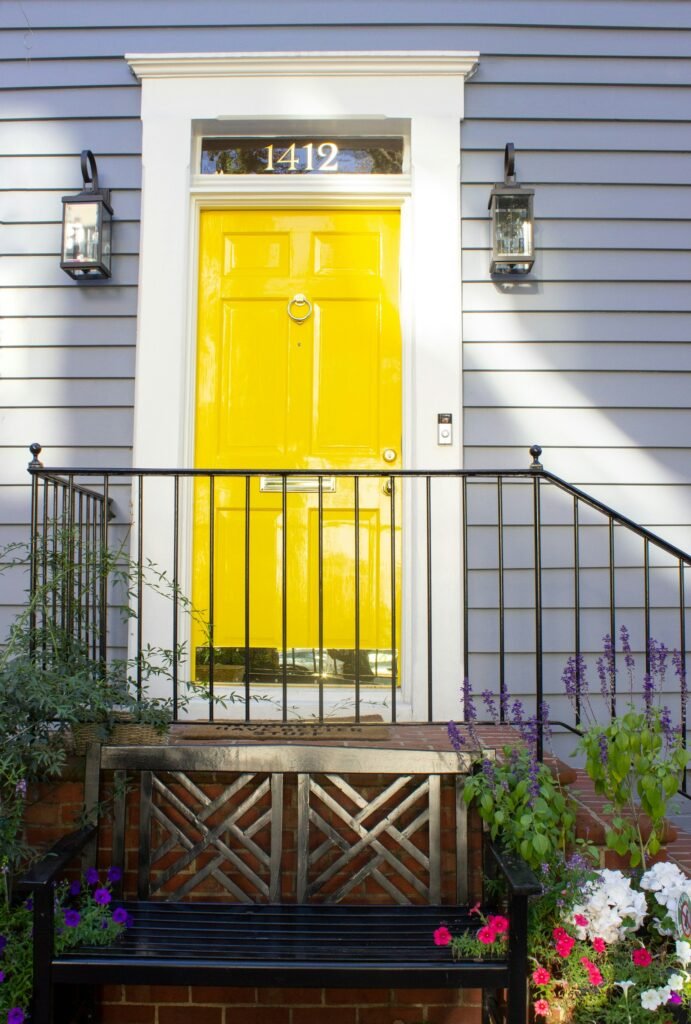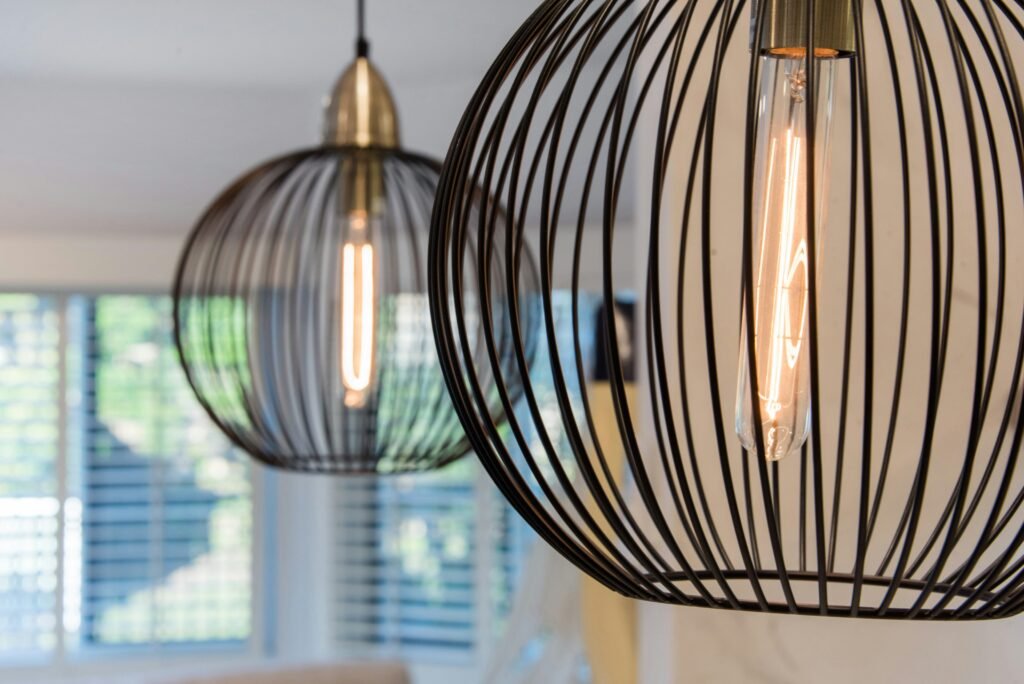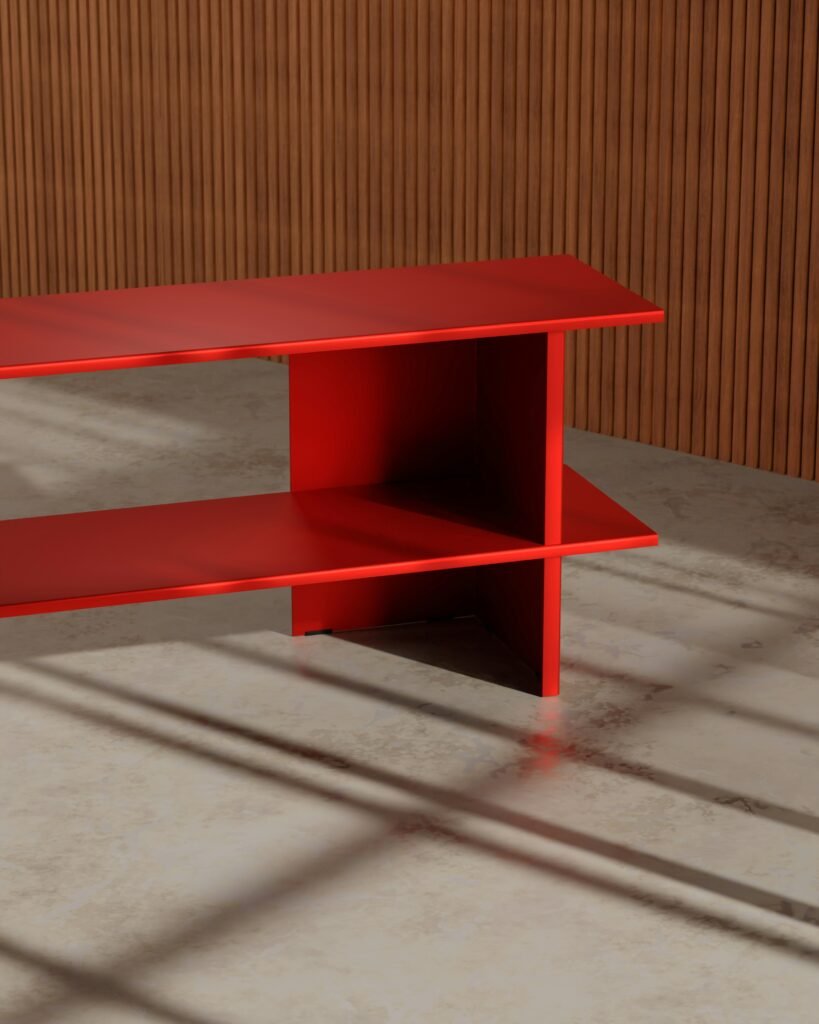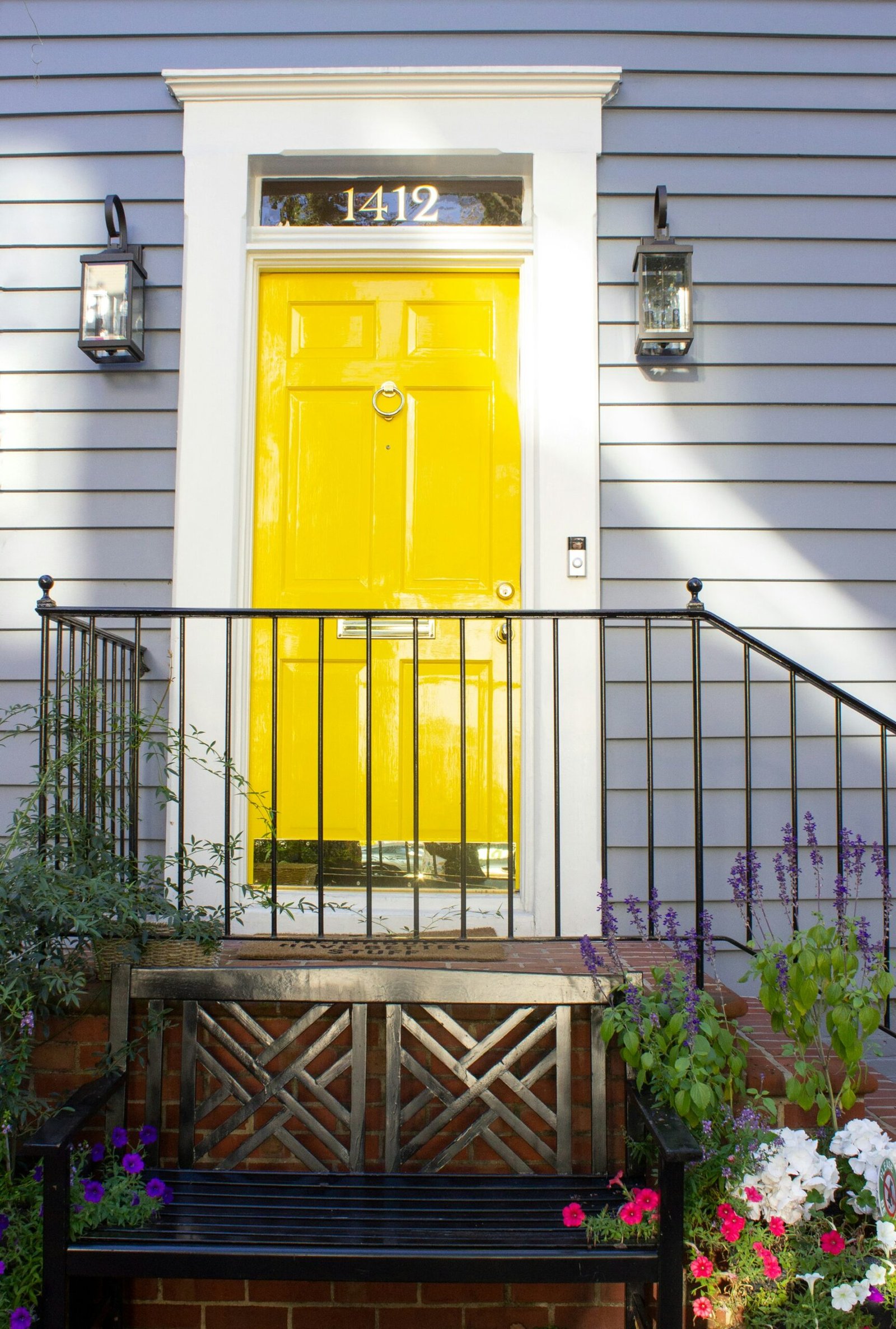Looking for practical and stylish ways to make your entryway feel inviting and functional?
How Can I Decorate My Entryway To Make It Inviting?
This article gives you step-by-step ideas and practical tips to transform your entryway into a space that greets you and your guests with style and purpose. You’ll find advice on layout, furniture, storage, lighting, color, and personal touches to make the space both beautiful and useful.
Start by Assessing Your Space and Needs
Before buying anything, take a careful look at your entryway and think about how you use it. Measure dimensions, notice traffic flow, and identify any problem areas like limited storage or poor lighting.
Ask yourself who uses the entryway and how often — is it a family hub with backpacks and shoes, or an elegant foyer used for occasional guests? Knowing the function helps you prioritize features like seating, hooks, or a console.
Measure and Map Your Layout
Sketch a simple floor plan with measurements of width, door swing, and nearby furniture or stairs. This helps you choose appropriately sized pieces and prevents overcrowding.
Include door clearance and walking paths so your layout maintains comfortable movement. A clear path of at least 32 inches is a good baseline for doors; aim for 36 inches where possible.
Identify Functional Requirements
Make a short list of must-haves: coat storage, shoe storage, a mirror, a landing zone for keys, or a seat for putting on shoes. Rank them by importance so you allocate space accordingly.
Consider seasonal needs too — in winter you may need more room for boots and outerwear, while summer may emphasize shoe storage and a drop zone for sunglasses and hats.
Choose the Right Layout for Your Entryway
The layout depends on the size and shape of your entryway. Narrow hallways, small vestibules, and wide foyers each need different approaches to feel balanced and functional.
Focus on creating an organized flow: a clear path from the door to the rest of the home, a designated drop zone, and visual balance so the space feels intentional rather than cluttered.
Small or Narrow Entryways
In tight spaces, prioritize vertical storage with hooks and narrow consoles. Use wall-mounted shelves, slim benches with hidden storage, and narrow mirrors to open the visual space.
Keep furniture depth to less than 12 inches in extra-tight areas and choose items that don’t block the pathway. Light colors and reflective surfaces help the area feel larger.
Medium-Sized Entryways
You have room for a stylish console table, a bench, and practical storage like baskets or a small cabinet. Use these to create zones: greet area with a mirror, landing zone with a tray or bowl for keys, and a seating area for shoes.
Consider a layered approach: a rug to define the zone, art to add personality, and functional pieces that suit your daily routine.
Large Foyers
Larger entryways can carry a statement piece like a chandelier, an oversized mirror, or a console with sculptural accessories. You can add a small seating vignette, a decorative table, and multiple storage options without crowding.
Balance is important in large spaces: anchor the layout with a rug and arrange furniture to create clear circulation paths.

Select Furniture That Matches Function and Scale
Furniture should reflect your needs and the scale of the space. Choose pieces that offer storage and functionality while contributing to the style you want.
Durability and wipeable finishes are smart choices for high-traffic zones. Opt for materials that handle scuffs and dirt easily, like sealed wood, metal, or treated upholstery.
Console Tables and Cabinets
A slim console is perfect for holding keys, mail, and a lamp or decorative item. If storage is a priority, choose a cabinet or console with drawers and shelves.
Make sure the table height is comfortable for dropping items (around 28–32 inches) and avoid oversize pieces in narrow entryways.
Benches and Seating
A bench provides a place to put on shoes and can include built-in storage under the seat. Choose a bench depth around 16–20 inches for comfortable seating without encroaching on the walkway.
Cushioned seating adds comfort; choose removable or washable covers for easy maintenance.
Storage Solutions: Built-ins vs Freestanding
Built-in storage can be ideal for shoe cubbies and concealed coat closets, but freestanding units like lockers, coat racks, or modular cubes offer flexibility for renters or seasonal changes.
Consider a combination: a low storage bench for shoes and a wall-mounted unit for outerwear and accessories.
Smart Storage Strategies
Good storage keeps clutter out of sight and makes daily routines smoother. Think about storing items by frequency of use: everyday items should be easiest to reach.
Use labeled baskets, baskets for shoes, a tray for mail, and hooks at varying heights for kids’ items. Make sure everything has a designated home so clutter doesn’t build up.
Hooks, Pegs, and Wall Storage
Hooks are inexpensive and highly effective. Install multiple hooks at different heights for coats, bags, and kids’ items.
A peg rail or a series of decorative hooks can act as a focal point while providing real utility. Use heavy-duty wall anchors for weight-bearing needs.
Baskets, Bins, and Cubbies
Open baskets and cubbies make it easy to toss items in quickly and retrieve them later. Labeling baskets by family member or item type keeps things organized.
For shoes, consider pull-out drawers or mesh-front cubbies to allow airflow and keep odors down.
Vertical Storage and Overhead Space
Don’t forget vertical space: shelves above coat height, overhead cabinets, or even pegboard walls can store seasonal items or decorative pieces.
Use baskets or boxes on high shelves to keep less-used items neat and accessible.
Lighting: Bright, Layered, and Welcoming
Lighting sets the mood and improves safety. Combine ambient, task, and accent lighting to create a layered effect that feels polished and functional.
Ensure you have bright enough light for putting on shoes, finding keys, and navigating at night. Dimmer switches provide flexibility for mood.
Overhead Fixtures and Chandeliers
A statement overhead fixture helps define the entry and adds personality. Choose a scale that complements the ceiling height and room size.
For low ceilings, use flush or semi-flush mounts; higher ceilings can accommodate pendants or small chandeliers.
Wall Sconces and Lamps
Wall sconces flanking a mirror or console add soft, flattering light. A table lamp on a console can provide easier access to switches and a cozy glow.
Make sure electrical outlets are positioned for plug-in lamps or incorporate hardwired lighting where possible.
Practical Tips for Lighting
Use warm temperature bulbs (2700–3000K) for a hospitable feel, and choose LED bulbs for energy efficiency. Position switches near the door for convenience.
Consider motion-sensor lights or a hallway runner light for safety when coming home hands full.

Color, Paint, and Material Choices
Color and materials set the tone. Light colors can make a small entry feel larger, while darker tones add drama and mask marks from heavy traffic.
Durable finishes like washable paint, tile, or vinyl plank flooring are practical. Use color accents and patterns through rugs, artwork, and accessories.
Paint Ideas for Walls and Doors
A fresh coat of paint makes an immediate impact. Consider painting the front door a contrasting color for personality and curb appeal if visible from inside.
Accent walls behind the console or with wainscoting add visual interest. Choose semi-gloss or satin finishes for easier cleaning.
Flooring Options and Durability
Entryways see dirt and moisture, so choose flooring that stands up to wear. Porcelain tile, stone, and waterproof vinyl plank are great choices.
Add a washable rug or runner in a traffic path to protect the floor and add color and texture.
Use of Textures and Materials
Layer textures like woven baskets, metal hardware, and soft textiles to make the space feel curated. Wood adds warmth, while metal or glass can feel modern and light.
Mixing textures keeps the entry visually appealing without cluttering it.
Mirrors and Wall Decor for Visual Impact
Mirrors enlarge the sense of space and offer a last-minute check before leaving. Pair mirrors with lighting to maximize their effect.
Artwork, shelves, and decorative hooks personalize the area. Keep wall decor proportional to the wall size and furniture beneath it.
Choosing the Right Mirror
A full-length mirror is practical for outfits; a round or rectangular mirror above a console adds depth. Mirrors with interesting frames act as focal points.
Place mirrors to reflect natural light where possible and avoid placing them opposite a cluttered view.
Art, Photos, and Personal Touches
Create a small gallery wall or a single statement piece. Family photos are cozy — use coordinated frames for a clean look.
Rotate seasonal art or swap pieces occasionally to keep the area feeling fresh.
Entry Rugs and Mats: Style Meets Function
An entry rug protects floors, captures dirt, and adds color. Choose rugs with durable fibers and a non-slip pad for safety.
Size matters: a runner should cover the main walking path, and a small rug should be wide enough to step on without blocking doors.
Types of Rugs for Entryways
Low-pile and flatweave rugs are easiest to clean and resist tripping hazards. Outdoor rugs made from polypropylene handle moisture and are easy to hose off.
For muddy climates, use a tiered system: a coarse doormat outside and an absorbent rug inside.
Maintenance and Cleaning Tips
Shake out or vacuum rugs frequently; spot clean with mild detergent for stains. For high-traffic rugs, consider professional cleaning once or twice a year.
Use a rug pad to prevent slipping and to protect the floor underneath.

Personalizing with Plants and Greenery
Plants add life and soften hard surfaces. Choose low-maintenance varieties like pothos, snake plant, or ZZ plant if your entry gets little light.
A small potted tree or a cluster of plants can create a more inviting atmosphere and improve air quality.
Practical Plant Placement
Place plants where they won’t be knocked over by passing traffic and where light levels suit the species. Use elevated stands or wall planters for small footprints.
Choose durable pots with trays to catch water and protect flooring.
Seasonal Styling and Quick Swaps
Change small elements with seasons to keep the entry feeling fresh without a full redesign. Switch rugs, add seasonal wreaths, or rotate throw pillows on the bench.
Keep a small basket for seasonal gear like umbrellas or gloves to make the transition smoother.
Ideas for Each Season
- Spring: light florals, pastel accents, and a bright doormat.
- Summer: coastal touches like wicker baskets and blue accents.
- Fall: warm tones, textured throw pillows, and a woven umbrella stand.
- Winter: layered textiles, darker hues, and practical boot trays.
Budget-Friendly Upgrades
You don’t need to spend a lot to make a big difference. Small changes like a fresh coat of paint, new hardware, or a decorative mirror can transform the space.
DIY projects and thrifted finds are great sources for character at a low price. Upcycle an old table into a console or repaint hooks to match your color scheme.
Affordable Items That Make an Impact
- New doormat and runner
- Wall hooks or peg rail
- Mirror from a thrift store
- Painted console or bench
- Decorative baskets for storage
DIY Projects and Easy Hacks
Simple DIY projects can add personality and solve functional problems. Build a bench with storage, create a custom key rack, or make an art display using inexpensive frames.
Hacks like command hooks for renters, peel-and-stick tile for floors, or removable wallpaper for an accent wall are renter-friendly and reversible.
Step-by-Step Example: Simple DIY Entry Bench
- Find a sturdy wooden crate or pallet and sand it smooth.
- Attach legs or a base for stability, and add a hinged top for storage.
- Paint or stain to match your decor and add a cushion for comfort.
This project supplies seating and concealed storage for shoes or seasonal items.
Styling Tips: Balance Function and Aesthetics
Good styling balances usefulness with beauty. Keep frequently used items accessible and hide infrequently used items behind closed storage.
Use a consistent color palette and repeat materials to make the space feel cohesive. Layer items by height on a console: lamp, tray, small bowl, and a sculptural object.
Accessory Placement and Grouping
Group items in odd numbers (3 or 5) for visual interest. Use trays for keys and loose items, and keep surfaces tidy by limiting decorative pieces.
Rotate accessories seasonally to keep the space feeling intentional.
Table: Quick Styling and Storage Options by Entryway Size
| Entryway Size | Best Furniture | Storage Ideas | Lighting |
|---|---|---|---|
| Small/Narrow | Slim console, wall hooks, narrow bench | Vertical hooks, floating shelves, baskets | Flush mount or wall sconces |
| Medium | Console with drawers, bench, mirror | Cubby baskets, shoe bench, small cabinet | Semi-flush or pendant + table lamp |
| Large/Foyer | Console table, seating pair, statement mirror | Built-in closets, multiple storage pieces | Chandelier or pendant + sconces |
This table helps you quickly match furniture and storage to the size of your entryway.
Common Mistakes to Avoid
Avoid overstuffing the entryway with too much furniture or choosing oversized pieces that block circulation. Too many decorative items can make the space feel cluttered and less functional.
Also avoid poor lighting and neglecting durable materials. An entryway must handle daily wear, so choose finishes that stand up to traffic and are easy to clean.
Mistake: No Defined Landing Zone
If keys, mail, and bags have no home, clutter accumulates. Create a simple landing zone with a tray, bowl, or drawer to keep essentials organized.
Mistake: Poor Scale and Proportion
Furniture that’s too big or too small disrupts balance. Use measurements and keep a comfortable pathway for everyday use.
Maintenance and Upkeep
Maintain your entryway by establishing quick daily routines: clear mail, shake out rugs, and wipe surfaces. A weekly tidy can prevent clutter from building and keep the area pleasant.
Set monthly or seasonal tasks like deep-cleaning rugs, inspecting lighting, and refreshing paint touch-ups as needed.
Simple Daily Habits
- Hang or stow coats immediately
- Place shoes in their designated spot
- Drop keys in the tray or hook by the door
Small habits make a big difference in sustaining a pleasant entryway.
Sample Layout Ideas and Measurements
Here are a few sample layouts with suggested dimensions to help you plan. Adjust these to your exact measurements and door swing.
Narrow Hallway (Minimum 36-inch width)
- Slim console: 10–12 inches deep
- Wall hooks: mounted 48–60 inches high for adults, lower row at 36 inches for kids
- Runner: 24–30 inches wide
Standard Entry (4–6 feet wide)
- Console table: 12–18 inches deep
- Bench: 16–20 inches deep, 36–48 inches wide
- Rug: large enough to cover primary walking path; typically 2.5–4 feet wide
Foyer (8+ feet wide)
- Console or round table centered under a mirror
- Seating area: pair of chairs or a bench with a small side table
- Rug: large enough to anchor furniture, usually 5×8 feet or larger
Final Touches: Personal and Practical Details
Add a few finishing touches that reflect your personality: a favorite vase, a curated tray for keys, a bowl for loose change, or a framed photo. These items should feel meaningful but not overcrowd the surface.
Consider adding tech-friendly features like a small docking station or a basket for charging cables to streamline daily routines.
Security and Convenience Additions
- Smart locks or a keyless entry system
- A small camera or peephole for safety
- Umbrella stand or boot tray for wet weather
Practicalities like these improve daily life and protect your home.
Conclusion and Quick Checklist
Transforming your entryway is about combining function with style in a way that fits your routine. With careful measurement, the right furniture, layered lighting, purposeful storage, and personal touches, you can create an inviting and practical entry that starts every arrival on a positive note.
Quick checklist:
- Measure your space and map traffic flow
- Decide on must-have functions (storage, seating, mirror)
- Choose appropriately scaled furniture
- Add layered lighting and durable materials
- Use hooks, baskets, and cubbies for organization
- Select a rug that fits traffic and size
- Personalize with art, plants, and seasonal accents
- Maintain with simple daily habits
If you follow these steps, you’ll create an entry that looks good and supports your daily life, making arrivals and departures smoother and more pleasant.
